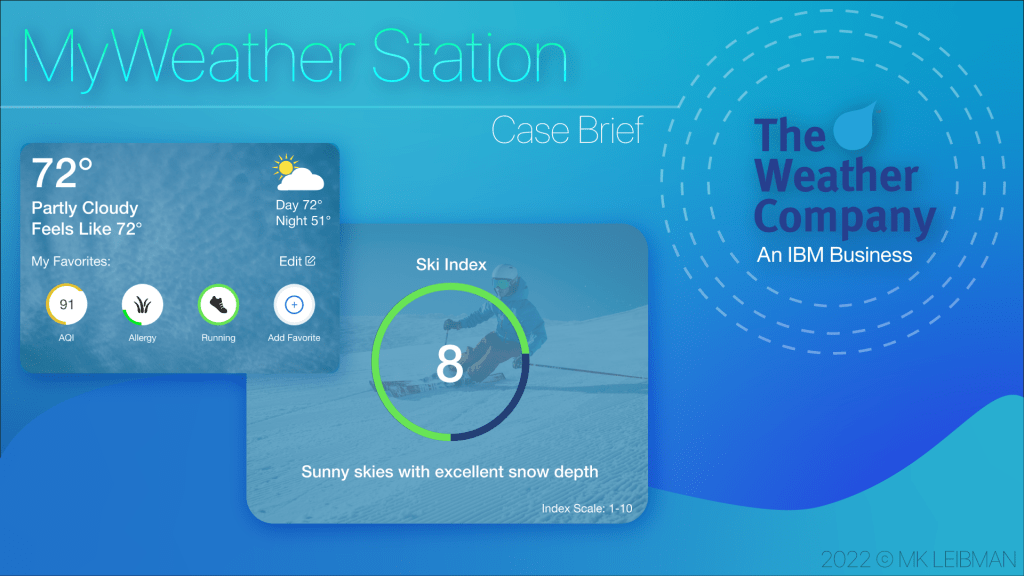

At the outset of this project, I conducted stakeholder interviews.
This revealed that while The Weather Company has the largest market share among weather apps, only around 1% of their active user base is a premium customer.
Premium costs $30 per year and offers an app without ads and access to advanced radar data beyond 24H.
This project explores the need for greater value proposition, and to uncover some reasons why users are not switching to premium. Premium subscriptions are an important business goal for The Weather Company, as ad supported revenue is likely to be impacted by expanding data privacy laws.
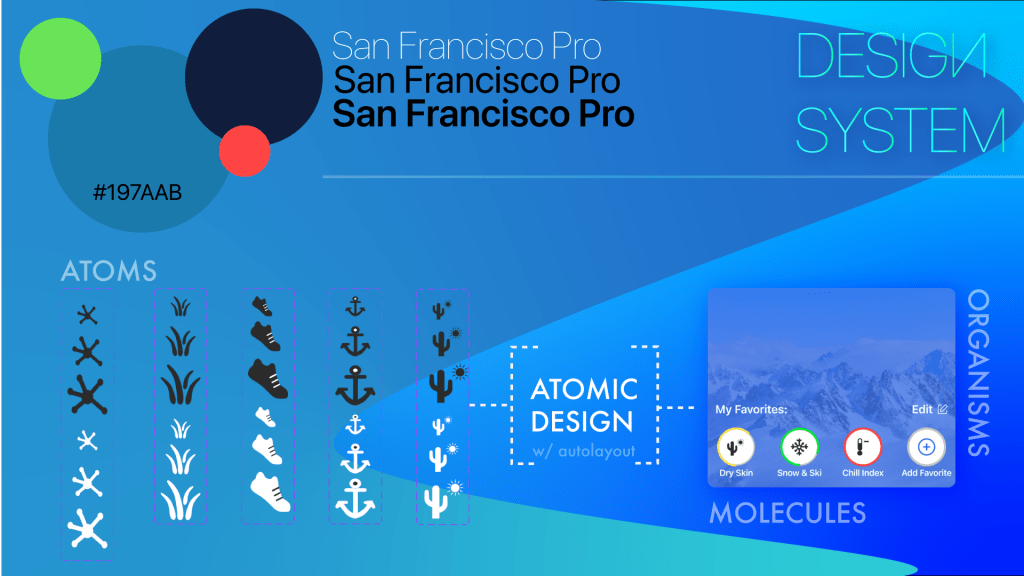

After stakeholder interviews, I decided to perform an heuristic evaluation using Jakob Nielsen’s usability heuristics with other designers not on the project in order to reduce bias.
Several problems related to information placement, app performance and user control and freedom were uncovered during this exercise.
From here onward, I focused my research on both qualitative and quantitative methodologies. Desk research was performed in order to explore the industry as well as competitors and their offerings.
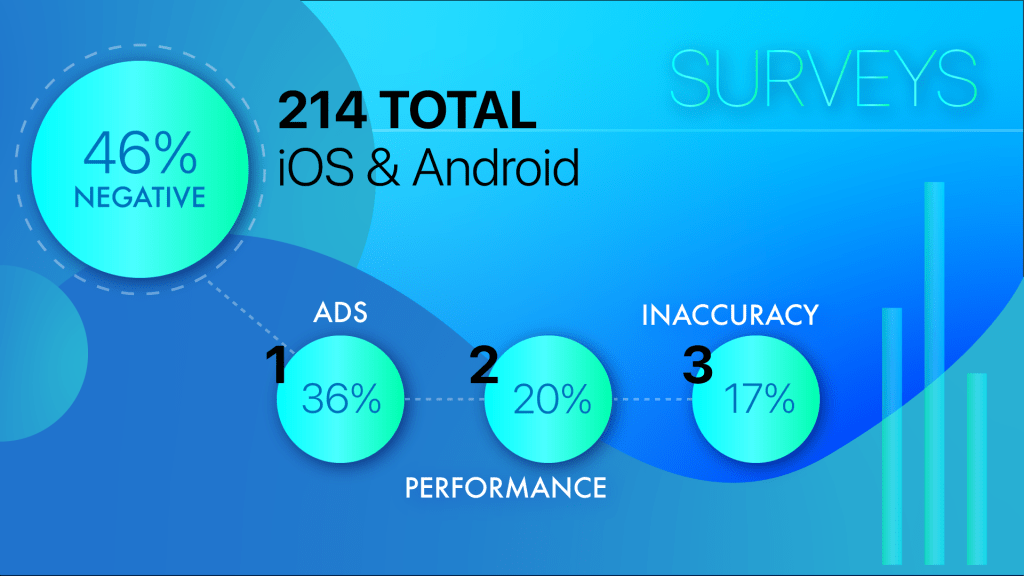
214 total participants were surveyed via collection of all responses across iOS and Google Play store reviews over one month.
Responses were then sorted via Affinity Mapping to sort common themes of reviews. From there, reviews were further sorted into negative, neutral or positive feedback.
Focusing on primary complaints, users noted that advertisements affected the performance of the app on their device. Furthermore, users noted the ads were of an impersonal or poorly designed nature (i.e a full screen pop-up with no clear close option).
While advertisements were the most mentioned complaint, app performance accounted for 20% of negative reviews. To differentiate reviews that mentioned both, responses were sorted based on the primary complaint. Performance feedback also revolved around video news, content which scored very low with users; many describing it as “clickbait content.”
Positive reviews focused on the abundance of available features, and detailed future forecasting. While most users were either positive or neutral in their assessment of The Weather Company app, the most requested feature improvement listed in reviews revolved around the request for more personalization.
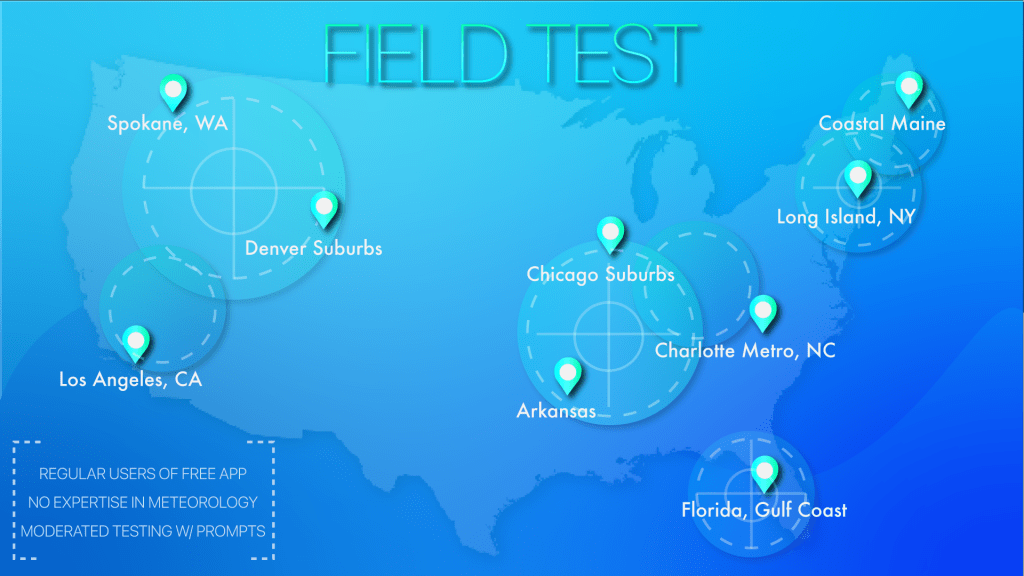
Field tests were performed remotely, with participants sharing their app screen. Each test was conducted over fifteen minutes.
Participants were first observed using the app without any prompts and to explain how they use the app to check their weather. Users were then given specific prompts in order to test how they sought out information in the app.
Finally, the test concluded with a brief feedback interview, asking users to list their favorite features and most requested improvements.
Most users echoed similar complaints to the survey group. Many found that information changed places often, leading to confusion when searching for information. Ads impacted their performance, and few were interested in video content.
Specific features are often redundant to information found elsewhere in the app. For example, ‘Dry Skin Index’ measures humidity values, but humidity is found in several other places. Users didn’t feel that ‘dry skin’ or the ‘sweat index’ implied it had anything to do with humidity.
Despite not having a background in meteorology, users in this test group were all broadly familiar with basic meteorological terms. By using layman’s terms to describe features, TWC may unintentionally be adding more confusion and lower adoption rates for certain features.
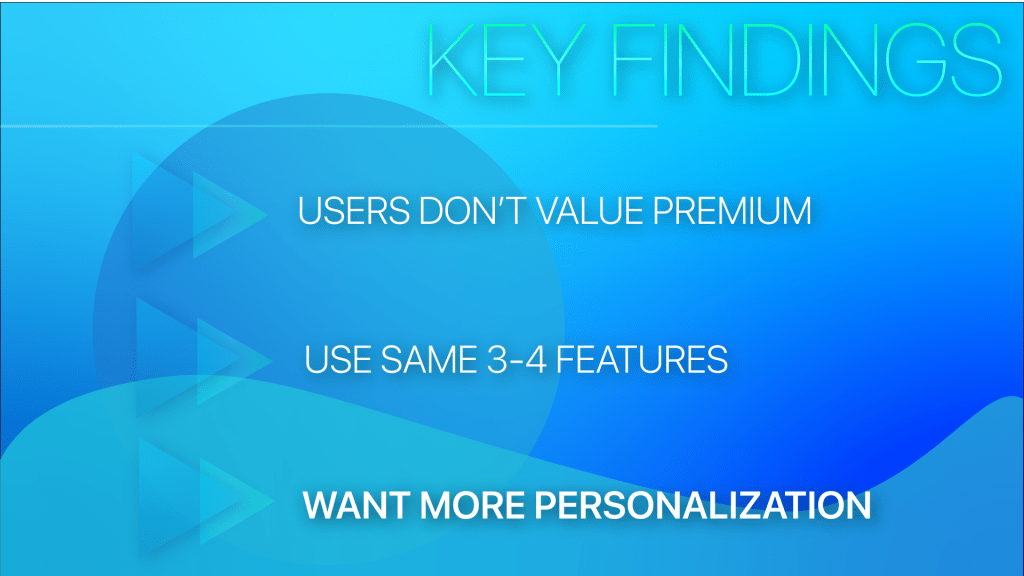
Despite being frustrated with advertisements, users still didn’t feel $30 per year for an ad free version of the app was worth it.
Unlike competitors, TWC does not have any personalization. In 2021, McKinsey performed their annual Next In Personalization Report. They noted that 71% of consumers expect personalization. More alarmingly, 76% of consumers get frustrated when not offered personalization. McKinsey’s research broadly echoes my own findings during this case study.
Finally, the most obvious takeaway here is that weather is regional. A one-size-fits all approach may work to maximize ad impressions and content. However, in the event of users needs – especially during a severe weather event – time is of the essence.
For example, a user in Los Angeles, California concerned with air quality must scroll all the way to the bottom of the application every time. While not necessarily a weather emergency, SWOT analysis exposes this as a major threat since this repetitive and timely process may lead them to explore competitors or even indirect competitors, such as IQAir, who also provide this data.
In order to empathize with our users needs, it is imperative that any solution be concerned with how the current information architecture affects their experience. And so personas were constructed around various regional users to reflect the weather diversity of the United States and to reflect how users find information most valuable to them.
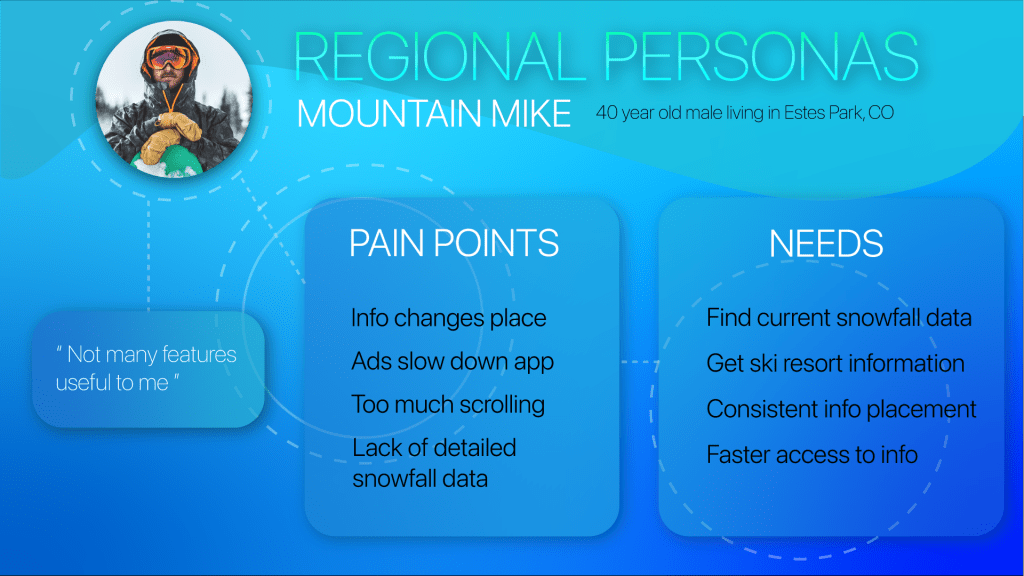
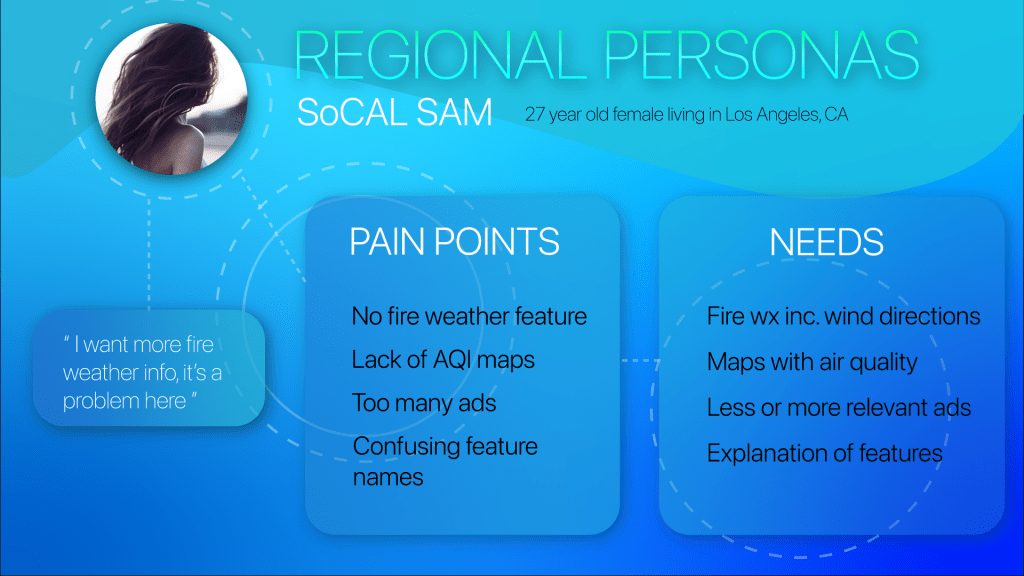

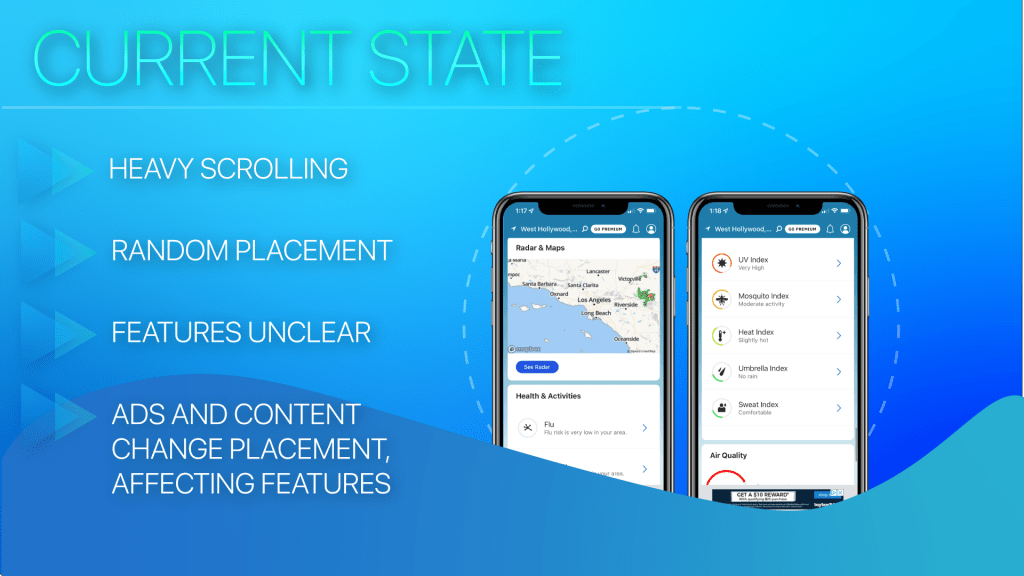
Our heuristic evaluation matches with what users indicated during the research stage. In particular, the heuristic ‘not enough user control or freedom’ has led to a frustrating user experience without the desired personalization.
Weather is personal. Successful solutions will recognize this. Thus the focus will be on appealing to various regional users of the app, to reflect the real world diversity of meteorology.
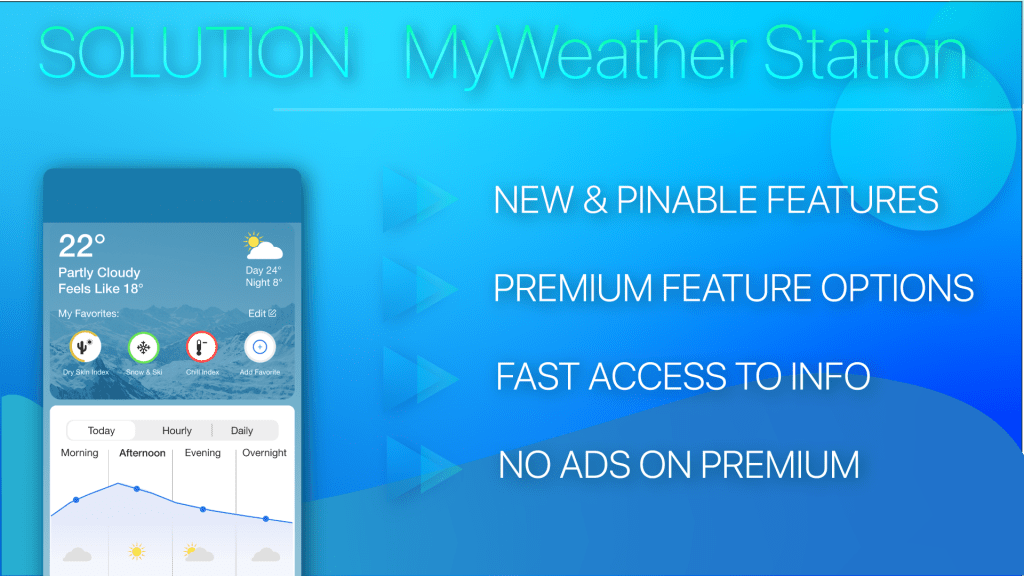
Current information architecture is scrolling-heavy because the business needs to maximize ad impressions. It is therefore counter to business goals to reform this information architecture. Instead, solutions were thus focused on a premium, no ads experience.
MyWeather appeals to the business goal of increasing premium subscriptions, while also appealing to users need for fast and effortless access to information.
MyWeather is highly iterative, building on the existing features already available in the app while providing opportunities for new ones. Additionally, the feature can be used to mine data for advertisement sales as an additional revenue source for IBM and The Weather Company.
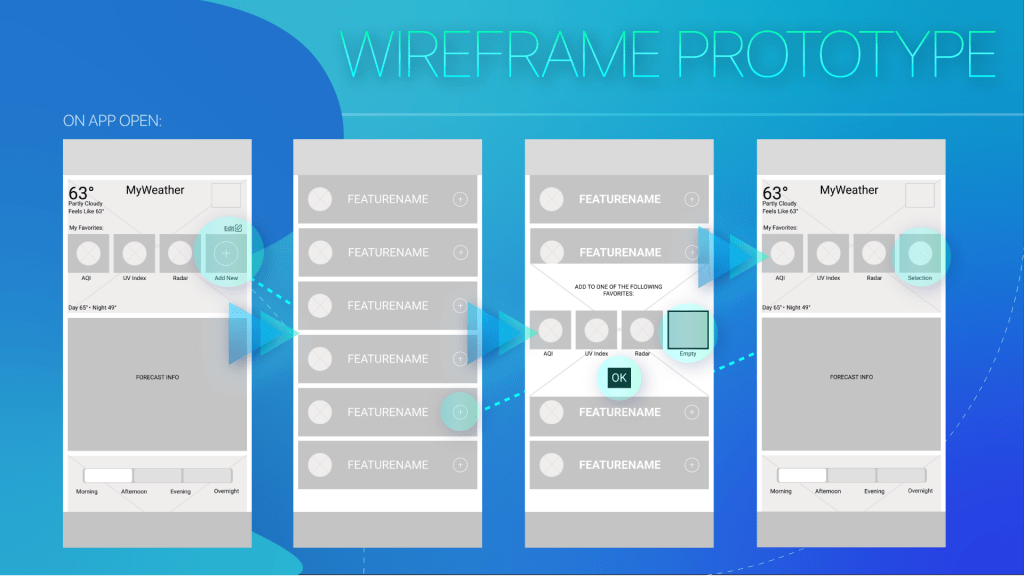
The above wireframe is the final result of several rounds of sketches, and card sorting exercises.
To make sure the MyWeather feature container made sense, I returned to the existing field test group to source participants to test the clickable wireframe prototype.
Below results represent high fidelity renderings designed in Figma that meet the regional diversity of American customers of The Weather Company app. New features were added, such as ‘Snow and Ski Index‘ modeled after the current ‘Running Index’ feature. Other features like ‘Air Quality Index‘ were expanded upon to create a more robust feature experience. To appeal to prosumer customers and weather aware users, ‘Tornado Conditions Index‘ was added using a combination of The Storm Prediction Center and The Weather Company Chief Meteorologist, Dr. Greg Forbes’ proprietary ‘TorCon Index’ prominently featured on The Weather Channel. Features contain both base app and premium features, which also contain a description in their feature card to explain the content to users (a current oversight).
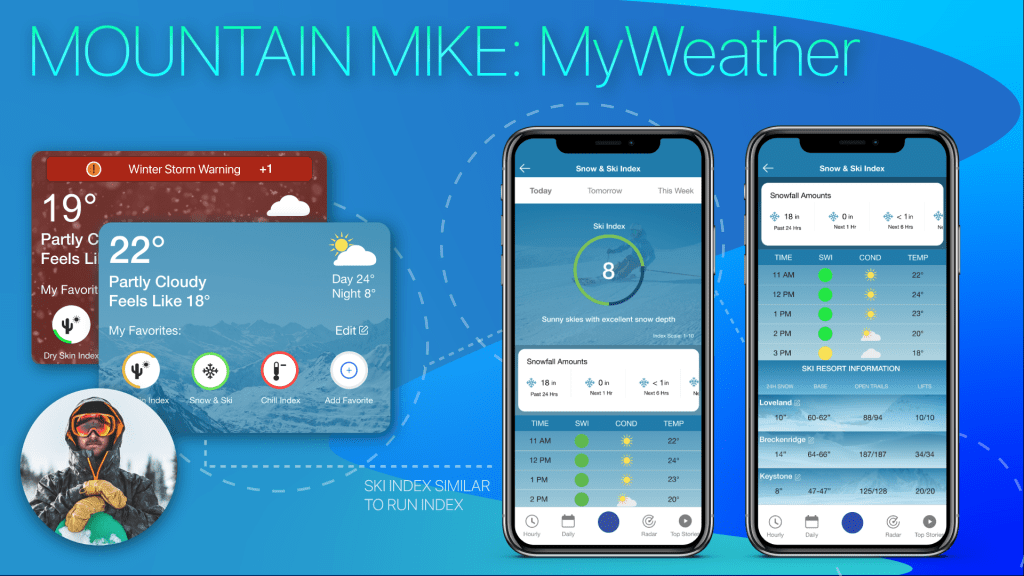
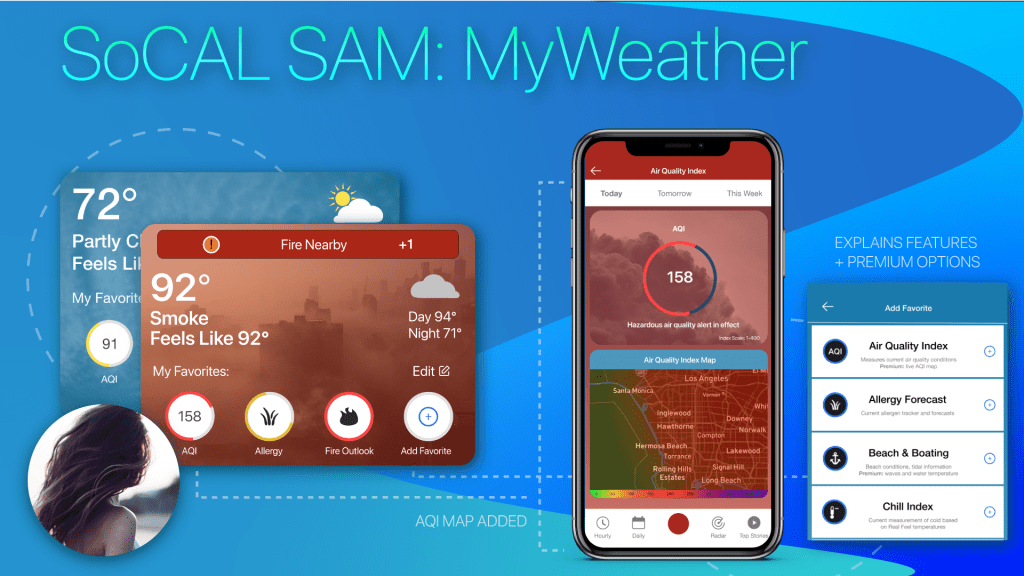
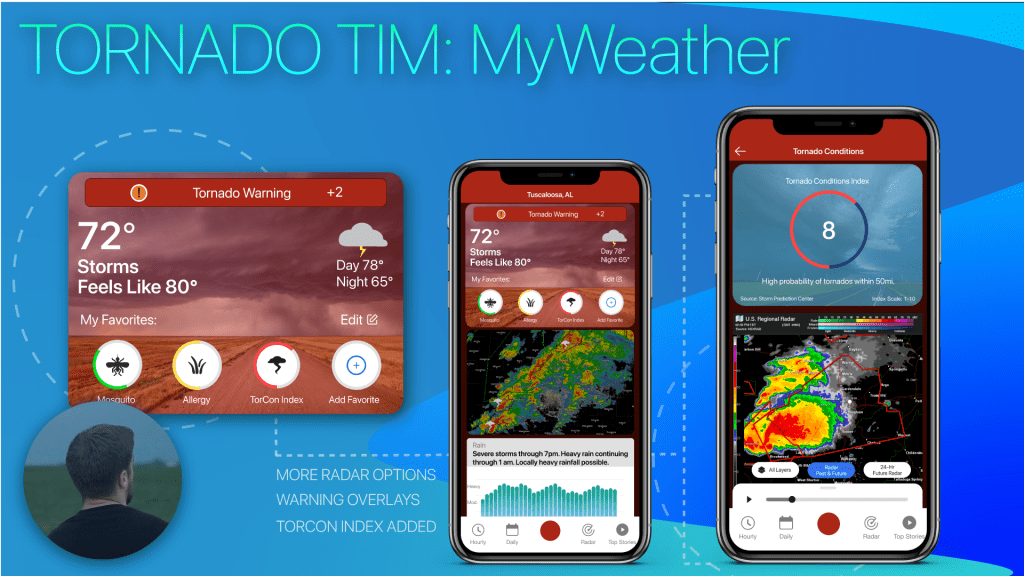
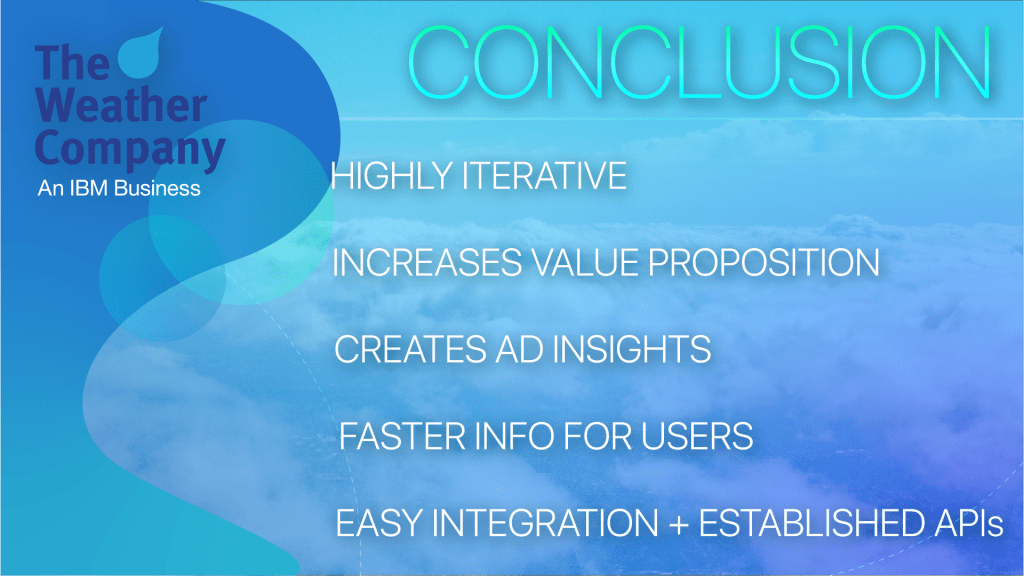
This project represents months of work and passion. Since childhood, I have had a fascination with the weather. I share this passion with millions of Americans. Some of whom – through user empathy and research – have shared with me that it is more difficult to get the weather information they need.
In my own opinion, exploring and learning about the weather should be a delightful experience, not one reduced to sensationalism or clickbait. Our earth is beautiful, even when the weather is most ugly. And as climate change continues to impact the weather, it should also be an experience that when necessary provides users immediate and clear access to life saving information. While this case study got excellent feedback from stakeholders, MyWeather has not yet been implemented at the enterprise level. My hope is that it, or something like it may be released in the future.
Thank you for reviewing my case study. I am currently available for hire, please get in touch if you have need of an experienced and passionate UX designer.